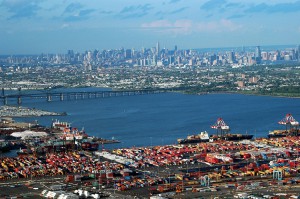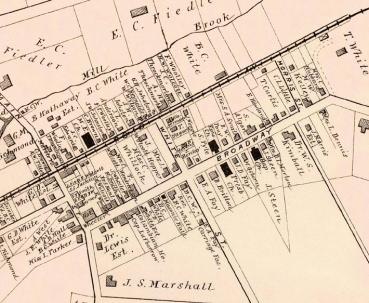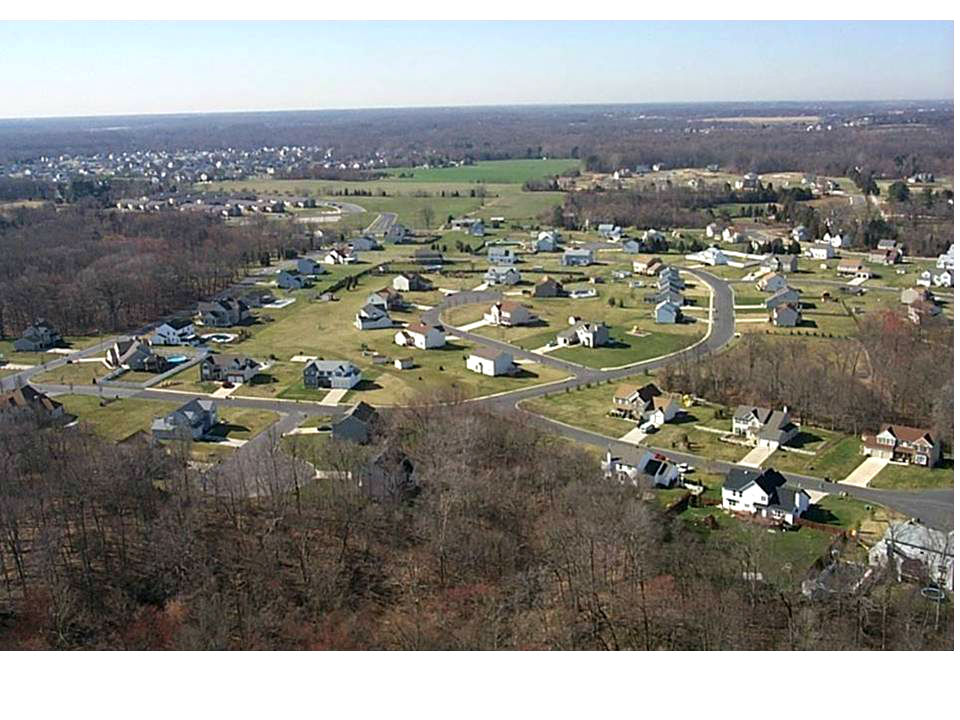New Jersey Future Blog
Forum Roundup: The Balancing Act Between Ports and Their Hosts
April 4th, 2013 by New Jersey Future staff
This article was written by former New Jersey Future intern Jorge Santos.
Robert Powell Ph.D., managing director at Nassau Capital Advisors LLC, introduced the Ports and Redevelopment session at New Jersey Future’s annual Redevelopment Forum by reminding attendees that port development depends not just on the facilities of the port itself but also on land-based facilities related to warehousing and distribution. The session focused on how the conflict over land that is readily usable for the port but that is also suitable for other kinds of development, such as residential or commercial, is playing out and what’s at stake.
The Port of Newark/Elizabeth is the largest port on the East Coast and the third largest in the United States, Powell noted. The importance of its “competitive position in the world … should be of great concern to policymakers in New Jersey because as the economic health of the port goes, so goes the job-creating ability of the New Jersey economy.”
Next to speak was Richard Larrabee, director of the port commerce department at the Port Authority of New York and New Jersey, who gave an overview of the current level of activity at the Port of Newark/Elizabeth and of its coming capacity expansion. Most Americans don’t have opinions on seaports, he pointed out, and yet cargo is vitally important to our day-to-day lives. The maritime transportation system has created a low-cost, almost frictionless ability for manufacturers to produce goods in the cheapest locations and sell them where demand is highest. To illustrate the point, he noted that the cost of transporting a pair of shoes to Newark that was manufactured in China is about the price of stamp.
Historically, Port Newark handled trade primarily with Europe but by 2003, after a wide variety of manufacturing had moved to Asia, China became its No. 1 trading partner. The amount of cargo coming into the region has doubled in the last 15 years and is expected to double again in the next 20, representing about 3 percent to 4 percent annual growth for the foreseeable future.
Newer, larger ships to handle this increased volume cannot currently traverse the Panama Canal or travel under the Bayonne Bridge. Once the canal widening is completed, the bridge roadbed will need to be raised by about 64 feet, a project scheduled for completion by late 2015.
The port also adds about 30,000 to 40,000 trucks trips a day to the region (a small percentage of the total regional truck traffic). An extensive environmental program is in place to reduce the carbon footprint of this traffic, and Larrabee stressed that everything they do has an environmental component to it.
Colette Santasieri Ph.D., director of strategic initiatives at the New Jersey Institute of Technology, spoke next, discussing her research on the relationship between the port municipalities and the port itself. Her study focused on Newark Bay and the five surrounding municipalities – Newark, Elizabeth, Jersey City, Bayonne and Kearny – and noted four key ways in which the cities and the port are related: spatial (they occupy the same space); economic (the port drives some portion of each city’s economy); societal (including positive effects such as job creation as well as negative ones such as truck traffic and pollution); and political (the nature of the relationship between the port and the cities’ leaders).
The biggest conflict in port-city relationships, she said, is a difference in missions. The city is focused on citizens and their quality of life, while the port has a global focus and is essentially a business. One major source of ongoing tension is the potential loss of waterfront property for non-industrial uses. The development of such property for non-port-related uses, which may be more beneficial economically to the cities, would threaten the functioning of the port, since port-related businesses can’t be moved inland.
Anne Babineau Esq., a partner with the law firm of Wilentz, Goldman & Spitzer PA, finished the discussion with an overview of the legal relationship between local municipalities and bi-state agencies such as the Port Authority, which sits between the federal and state levels. The Port Authority exists as a voluntary delegation of limited power, granted by the states of New York and New Jersey to the agency and away from the states themselves. Several cases were discussed to illustrate the delicate balance of authority and decision-making that the Port Authority and the states negotiate, a balance that Babineau said shifts back and forth over time and depending on specific circumstances.
As the session made clear, this is just one of several balancing acts that take place on an ongoing basis between ports, their governing bodies and their hosts.


















Are the slides that Mr. Larrabee and other speakers used available?
They are indeed! All available presentations are on our SlideShare channel, http://www.slideshare.net/njfuture. For this presentation, here are Richard Larrabee’s slides: http://www.slideshare.net/njfuture/njfuture-redevelopment-forum-13-ports-larrabee and Anne Babineau’s slides: http://www.slideshare.net/njfuture/babineau-ppt. Thank you for your interest!